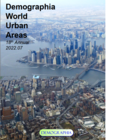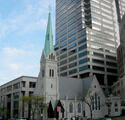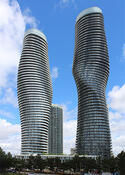Since the beginning of the 19th century, world population has skyrocketed. According to a summary of estimates by the US Census Bureau, the world population was about 970 million in 1800 (midpoint of the high and low estimate). The Census Bureau site indicates that population usually increased in previous centuries, though was at an all-time high in 1800. read more »
Demographics
UN World Population Projections: Declines Later in the Century
- Login to post comments
US Total Fertility Rates: Toward Europe?
The latest final births data (2020) from the Center for Disease Control indicates that the US total fertility rate continued to decline and has reached a record low. The total fertility rate is the number of children that the average woman has during her child-bearing years. In 2020, the US rate was 1.64, well below the 2.10 replacement rate. read more »
- Login to post comments
Demographia World Urban Areas: 2022 Released
The 2022 edition of Demographia World Urban Areas has been released, which provides revised population estimates based on the 2020 round of censuses, though some censuses have been delayed due to the pandemic (such as in India and Bangladesh). read more »
Living As a Moral Minority
It’s popular today to talk about the “common good” or the “public good.” But one of the implications of the shift to the negative world is that Christians need to start becoming much more concerned about their private good – the good of their own families, churches, and communities. read more »
- Login to post comments
The Labor Crisis and the Future of the Heartland
While topics like “The Great Resignation” and “the labor shortage” have gained traction in popular discourse, much of these discussions overly simplify trends that have been brewing for decades. read more »
Why Millennials Are Dropping Out
With inflation soaring, trust in governments plummeting, and the global economy teetering on the brink of collapse, one might expect to see the masses out in the streets, calling for the heads of their rulers. But instead of rage and rebellion, we mostly see apathy. Rather than getting radicalised, people are dropping out. read more »
- Login to post comments
Media War in Ukraine: Class and Gender
Like all physical conflicts, the current war in Ukraine is also an ongoing war of narratives, in this case one making heavy use of visual imagery. As they have played out, the threads of these narratives have a telling sequence of their own, revealing the tragic arc of most wars as they confront the ultimate—and ultimately gendered and classed—victims of modern warfare: women, children, the elderly, the poor and working classes. read more »
- Login to post comments
Densification in Toronto: The Evolving Urban Form
Like many of the world’s largest cities (Note 1), public policy seeks to densify Toronto, which is already the densest urban area (the international term) or population centre (the Canadian term) in North America (as used here, north of Mexico). An urban area is continuously built up urbanization and is routinely at the core of a metropolitan area (in Canada, a Census Metropolitan Area, or CMA). read more »
- Login to post comments
Europe's Entrepreneurial Paradox
When mapping the concentration of superentrepreneurs in the world, we find a paradox in Europe. Half of the top-ten countries with the most superentrepreneurs are found in Europe, yet Europe is far behind the US and Canada when it comes to high-end entrepreneurship. Another perhaps surprising fact is that gender equal Europe has a particularly strong deficit of women superentrepreneurs. read more »
- Login to post comments
The Bureaucratization of American Leadership
In newsletter #63 I discussed the managerial revolution, or the way that we transitioned from an entrepreneurial capitalist system dominated by owners to a bureaucratic system dominated by managers and technocrats spanning the public and private sectors. read more »
- Login to post comments





















